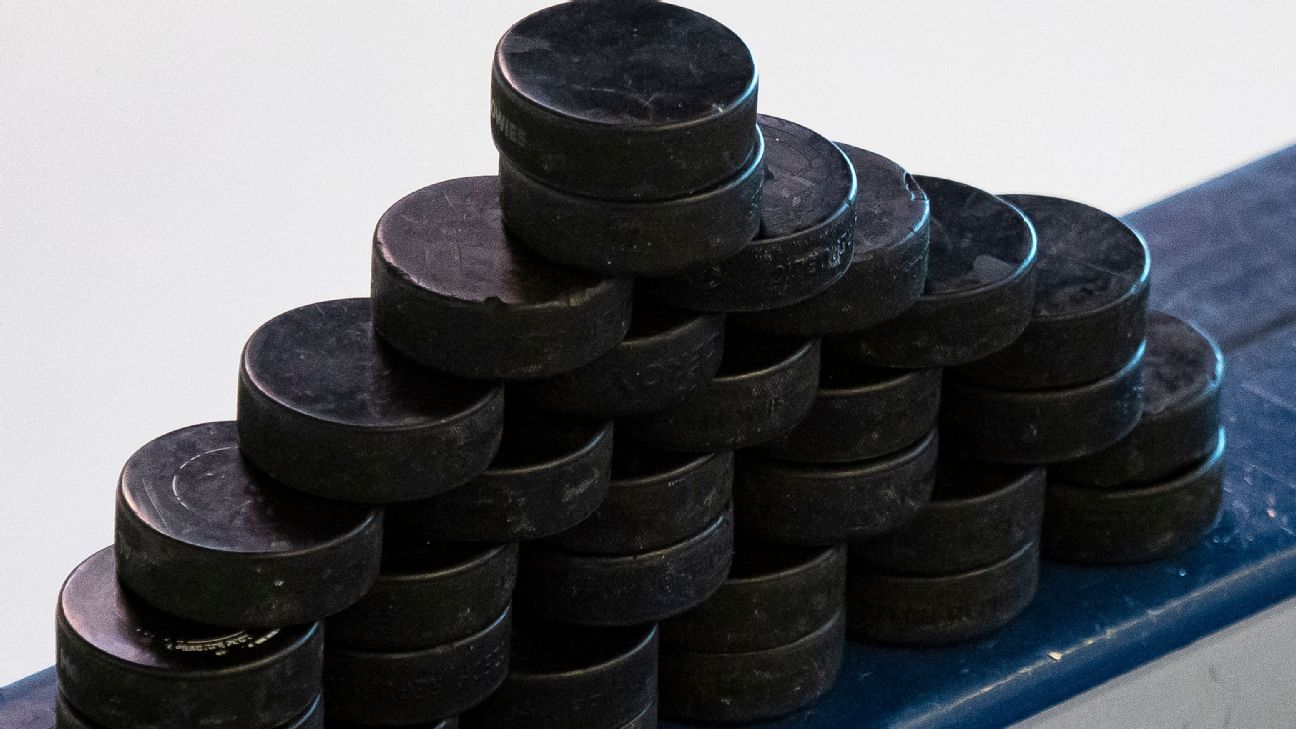The Premier Hockey Federation is doubling down on women’s hockey by announcing plans to increase its salary cap to $1.5 million per team for the 2023-24 season in a bid to deepen its talent pool by offering players an opportunity to earn a living wage.
The increase, announced Wednesday morning, will double each team’s current cap of $750,000 this season and is part of a three-year, $25 million commitment approved by the league’s board of governors 11 months ago. The PHF consists of seven franchises, though commissioner Reagan Carey told The Associated Press that expansion is once again being considered after the league added a team in Montreal this season.
“This is just another example of us going full steam ahead with what we know can be a great sport for an even greater audience and do more for the players that are in it,” Carey said. “We consider this announcement a win for anyone who cares about women’s sports, but especially women’s hockey.”
The approval came at the league’s winter meetings, and the jump in the salary cap represents a 900% increase since 2021-22, when each team’s salary limit stood at $150,000.
The PHF also began providing full health-care benefits to players this season while also growing its league operations staff and improving team facilities.
“It’s a big commitment and reflects the dedication of everybody that’s involved with the PHF and understanding the importance of getting to this landmark number,” Carey said. “I think this certainly demonstrates the strength of our league and the business development model that we’ve been working towards and continuing to create.”
As for expansion, Carey said, “It’s certainly on the docket,” without providing any further details or a timeline.
This season’s salary-cap increase led to Mikyla Grant-Mentis becoming the first women’s hockey player in North America to sign an $80,000 contract, with the Buffalo Beauts. Under a $1.5 million cap, a 20-player roster would average out to each player making $75,000 per season.
Carey said all seven teams have exceeded 75% of their salary caps, with some having already reached the limit.
“This is an incredible development and a testament to the unwavering commitment of the people that are making this a reality,” PHF Players’ Association executive director Nicole Corriero wrote in a text to the AP. “More importantly, the PA acknowledges the many past and current players that have served as pioneers for the league and sport as a whole. … The success of this league and continued growth would not be possible without them.”
The rising cap would allow teams to offer salaries of over $150,000, which would represent more than U.S. and Canadian national team players are currently compensated.
Most national team players have balked at joining the PHF. They have instead formed the Professional Women’s Hockey Players’ Association, which has teamed with investors and NHL franchises to form its own league. Initial plans to unveil the league by the end of this year have been pushed back indefinitely into 2023.
The PHF changed its name from the National Women’s Hockey League two years ago, and teams are now privately owned, though some ownership groups control more than one franchise. Aside from Buffalo and Montreal, the league has teams based in Boston, New Jersey, Connecticut, Minnesota and Toronto.
The NWHL was founded as a start-up, four-team venture in 2015 by Dani Rylan Kearny, becoming North America’s first women’s hockey league to pay players a salary. The league initially controlled all its franchises while relying on outside investors to make up the revenue gap from ticket and merchandise sales to pay for salary, travel and administrative costs.
The PHF now has numerous sponsorship deals and broadcast agreements with ESPN+ and Canada’s TSN to air all of its games.
Carey, in her first year as commissioner, could not have envisioned this level of financial commitment for women’s hockey a decade ago during her eight-year term overseeing the women’s game at USA Hockey. The challenges then were finding creative ways to keep national team players and prospects in the sport because there were few options for them to earn a living while playing hockey after college.
“To see how far it’s come, no, it would be hard to imagine that this is where we are. And recognizing how many people have to be a part of that commitment to move things forward is humbling,” Carey said. “Just an exceptional amount of traction and advancement in a short amount of time.”
